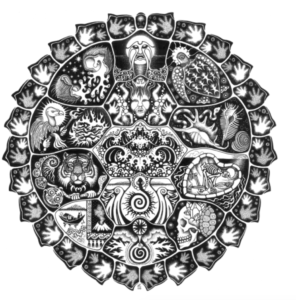After ending her trilogy, Jemison tells the reader of her mother’s death, by explaining, “mom had a difficult last few years” (416). This revelation made me think of the distant but protective relationship between Nassun and Essun throughout the book.
The first thing that came to my mind was how, no matter how far away they are from each other, they can still identify one another’s orogeny. They spend the whole duration of The Stone Sky living separate lives. Shortly after Essun wakes from her coma, or what Hoa would call “periods of half waking and half sleeping” (11), she begins to remember locating Nassun while opening the gate. She confides in Tonkee, “‘Nassun. I know where she is” (22), and exclaims, “‘I have to go find her”‘ (23). Continue reading “Last Wishes”

